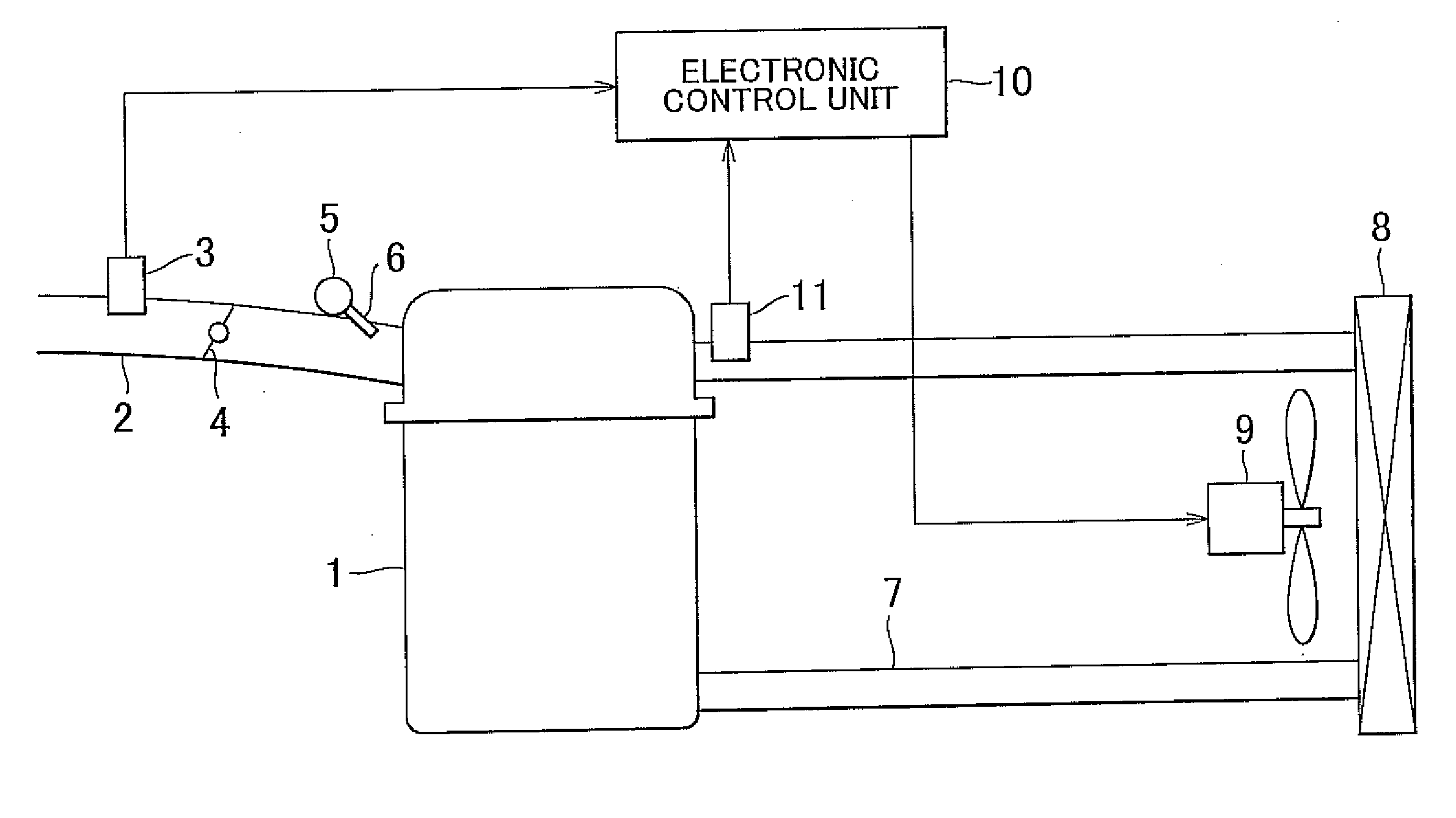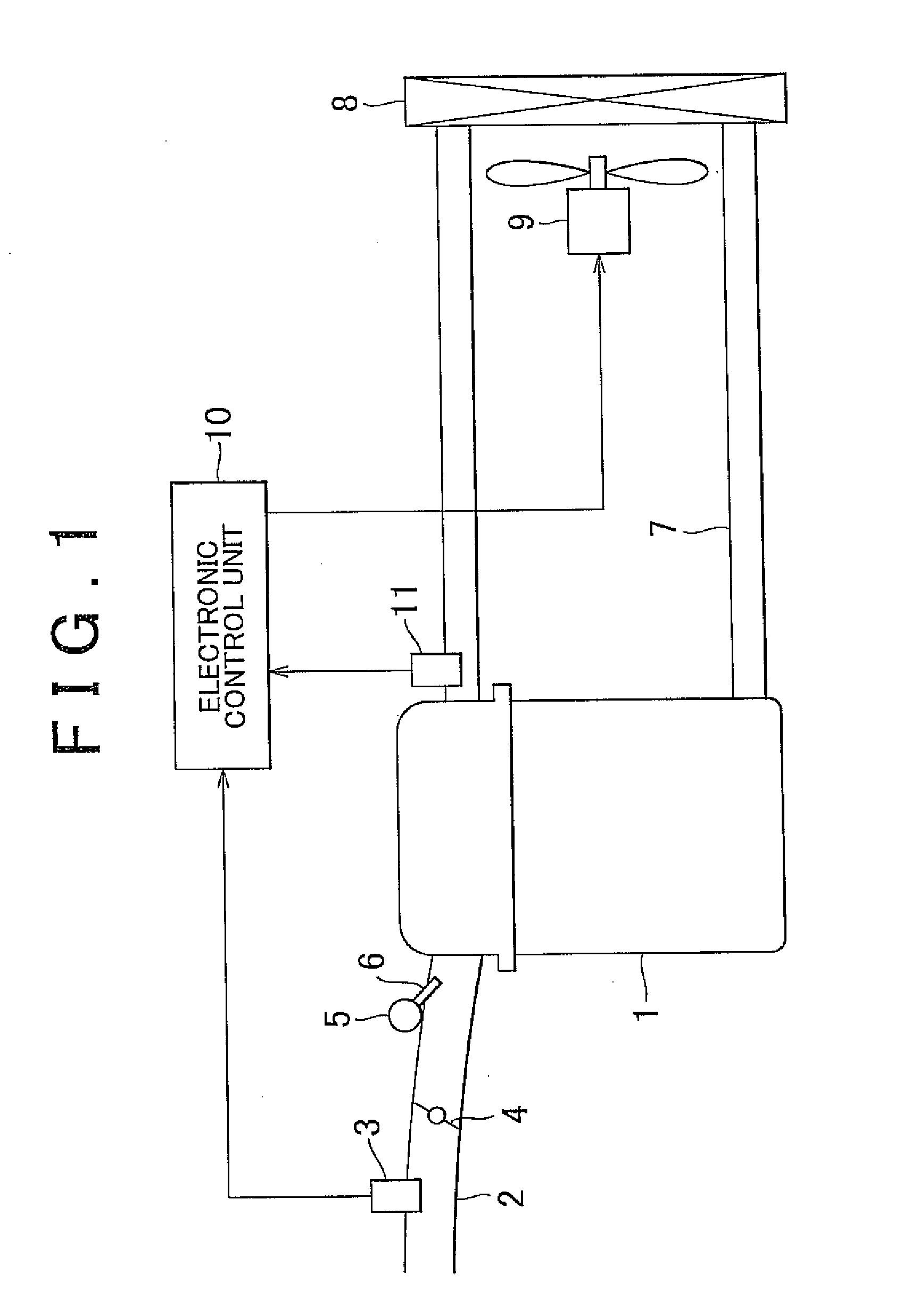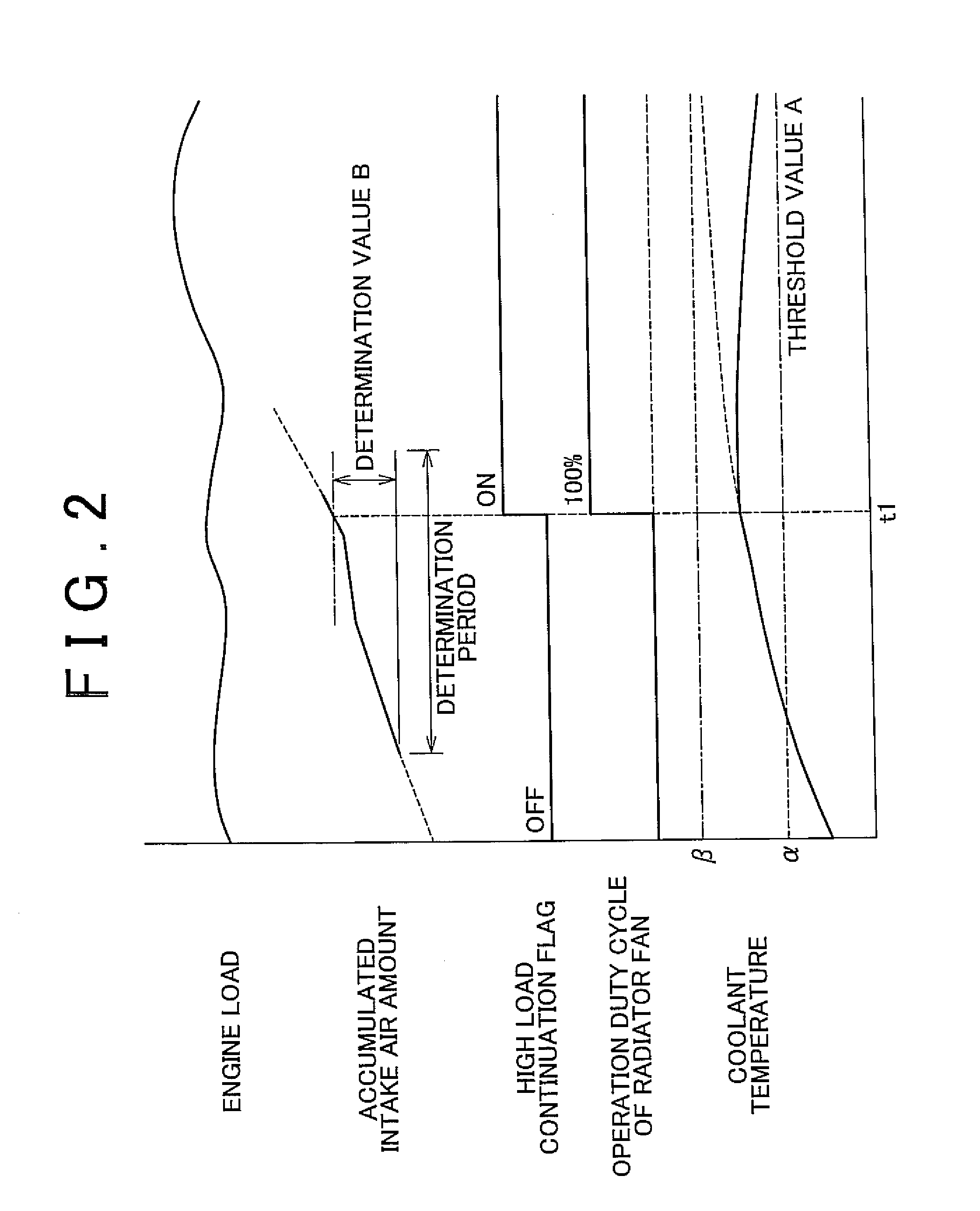[0009]The invention provides a cooling apparatus for a water-cooled engine, and a method of controlling a cooling apparatus for a water-cooled engine, which effectively improve startability of the engine when the engine is restarted immediately after the engine has been operated under a high load.
[0011]Thus, according to the first aspect of the invention, the cooling apparatus for a water-cooled engine includes a determination portion that determines whether the engine is operated under a high load; and a setting portion. If the determination portion determines that the engine is operated under a high load, the setting portion sets an operation rate of the radiator fan at a time point at which the determination portion determines that the engine is operated under a high load, to a value higher than a normal operation rate at the same
coolant temperature as a
coolant temperature at the time point. In this case, when the engine is operated under a high load, even if the
coolant temperature is low, the radiator fan is operated at a high operation rate. Thus, when there is a possibility that the engine will be restarted in a high temperature condition after the engine is operated under a high load, it is possible to decrease in advance the temperatures of oil and coolant for the engine during the operation of the engine. Accordingly, with the above-described configuration, it is possible to effectively improve the startability of the engine when the engine is restarted immediately after the engine has been operated under a high load.
[0012]It is conceivable to operate the radiator fan after the engine is stopped after the engine has been operated under a high load. In this case as well, it may be possible to decrease in advance the temperatures of oil and coolant before the start of the engine, and therefore, it may be possible to improve the restartability. However, when the water-cooled engine is in a stopped state, operations of an
alternator and a generator are also stopped. If the radiator fan is operated in this situation, there is a concern that the engine cannot be restarted due to a decrease in a power-
feeding ability, which is caused by
discharge of a battery. In contrast, in the above-described configuration, such a concern is eliminated, because the radiator fan is operated at a high operation rate during the operation of the engine.
[0014]With this configuration, when the engine is operated under a high load, the threshold value of the coolant temperature is set to a value lower than the normal threshold value. As a result, when the engine is operated under a high load, the operation of the radiator fan is started at a low coolant temperature. Thus, when there is a possibility that the engine will be restarted in a high temperature condition after the engine is operated under a high load, it is possible to decrease in advance the temperatures of oil and coolant for the engine during the operation of the engine. Accordingly, with the above-described configuration, it is possible to effectively improve the startability of the engine when the engine is restarted immediately after the engine has been operated under a high load.
[0016]With this configuration, when the engine is operated under a high load, the target
cooling temperature of the coolant is set to a value lower than the normal target
cooling temperature. That is, in this case, the radiator fan is operated to cool the coolant for the engine until the coolant temperature reaches the target
cooling temperature lower than the normal target cooling temperature. Thus, when there is a possibility that the engine will be restarted in a high temperature condition after the engine is operated under a high load, it is possible to decrease in advance the temperatures of oil and coolant for the engine during the operation of the engine. Accordingly, with the above-described configuration, it is possible to effectively improve the startability of the engine when the engine is restarted immediately after the engine has been operated under a high load.
[0019]With this configuration, when the engine is operated under a high load, the threshold value of the coolant temperature is set to a value lower than a normal threshold value. As a result, when the engine is operated under a high load, the operation of the radiator fan is started at a low coolant temperature. Thus, when there is a possibility that the engine will be restarted in a high temperature condition after the engine is operated under a high load, it is possible to decrease in advance the temperatures of oil and coolant for the engine during the operation of the engine. Accordingly, with the above-described configuration, it is possible to effectively improve the startability of the engine when the engine is restarted immediately after the engine has been operated under a high load.
 Login to View More
Login to View More  Login to View More
Login to View More 


